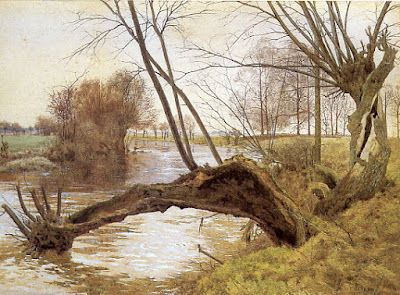Title : Pollarding and Coppicing
link : Pollarding and Coppicing
Pollarding and Coppicing
Farmers would pollard willows to produce flexible rods; they'd cut back beeches to make charcoal; and they'd pollard hazels to produce nuts.
It was practiced in Europe and Asia, and among the indigenous populations of the new world.
Pollarding was commonly practiced for tens of thousands of years until it fell mostly out of favor in the industrial revolution.
Vincent van Gogh
By allowing a tree trunk to grow up to the height of a standing person before it bears tender shoots, the shoots and leaves are above the browse line of deer, sheep and other animals.
Vincent van Gogh
The small branches can be cut back again to the same point after two, four, eight, or ten years, to be used for animal feed, firewood, tool handles, or building materials.
Sir George Clausen, The Return from the Fields
Many of us have assumed that this practice disfigures trees, but it's quite the opposite, providing reliable raw materials for people, and a healthy renewing cycle for the trees. A pollarded tree can potentially live for a thousand years.
 |
According to author and arborist William Bryant Logan, it's not only healthy for the trees, but it expands the environment for a variety of other plants and animals.
Pollarded Willows, 1887 by William Fraser Garden
Pollarding is still practiced in Europe, but it's less common in the USA.
The place you tend to find it these days is in cities, where trees receive more attentive care than they do in the untended forests.
Ivan Shishkin, Coppice (Noon) 1872

----
Previous post on William Fraser Garden
Thus Article Pollarding and Coppicing
You are now reading the article Pollarding and Coppicing with the link address https://idealbodys.blogspot.com/2021/06/pollarding-and-coppicing.html









0 Response to "Pollarding and Coppicing"
Post a Comment